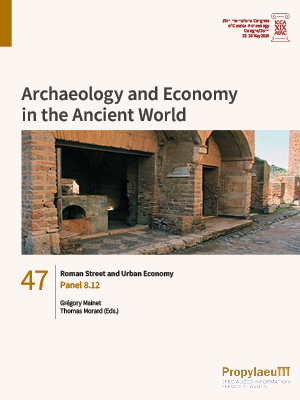
How to Cite
License

This work is licensed under a Creative Commons Attribution-ShareAlike 4.0 International License.
Identifiers
Published
Roman Street and Urban Economy
Panel 8.12
Streets played a key role in shaping the ancient economic townscape. We usually consider streets simply as a thoroughfares for traffic, but this idea falls short of the facts as suggested by ancient authors like Martial or Juvenal. The “street space” was built in three dimensions and was an important place for the social and economic interactions constituting the urban social life in Antiquity. Such a function clearly appears in the architecture of the street shaped by numerous tabernae built within atrium houses, rows of shops or multi-storey buildings and by the activities which happened there. In other words, the economy of ancient cities was not confined to specific buildings such as macella.
On the contrary, economic activities extended beyond the walls of such buildings and invaded the whole urban fabric along the streets. The papers of the panel “Ancient Streets and Urban Economy” intend to shed new light on the role of the space of the street in the urban economy in ancient societies between the 2 nd century BC and the 3 rd century AD in particular. To further our understanding, the different authors propose to examine some case studies from for instances Alba Fucens, Athens, Lugdunum, Norba, Ostia and Pompeii.






